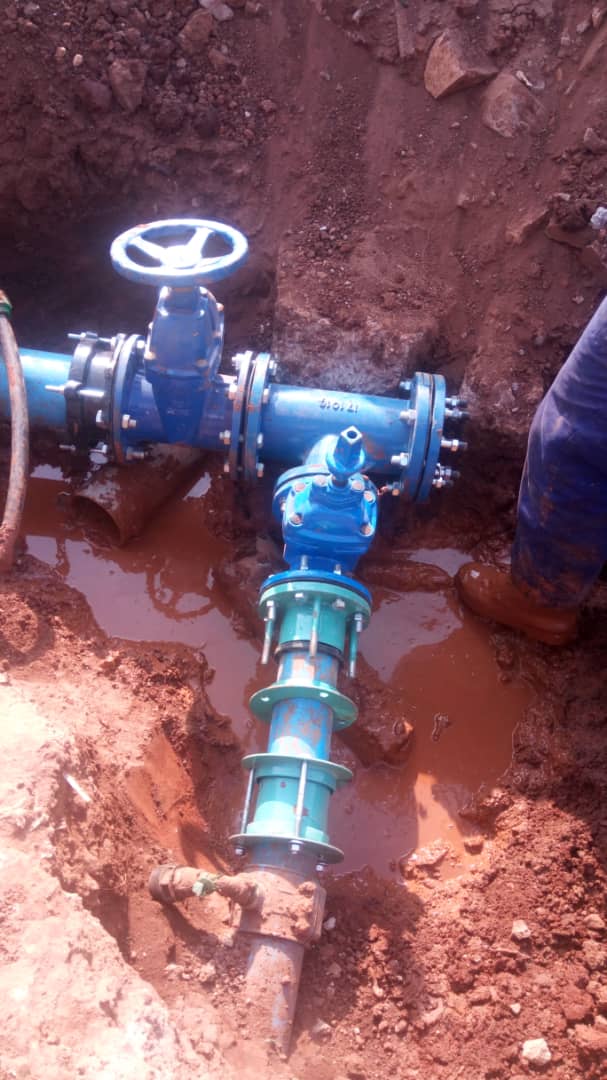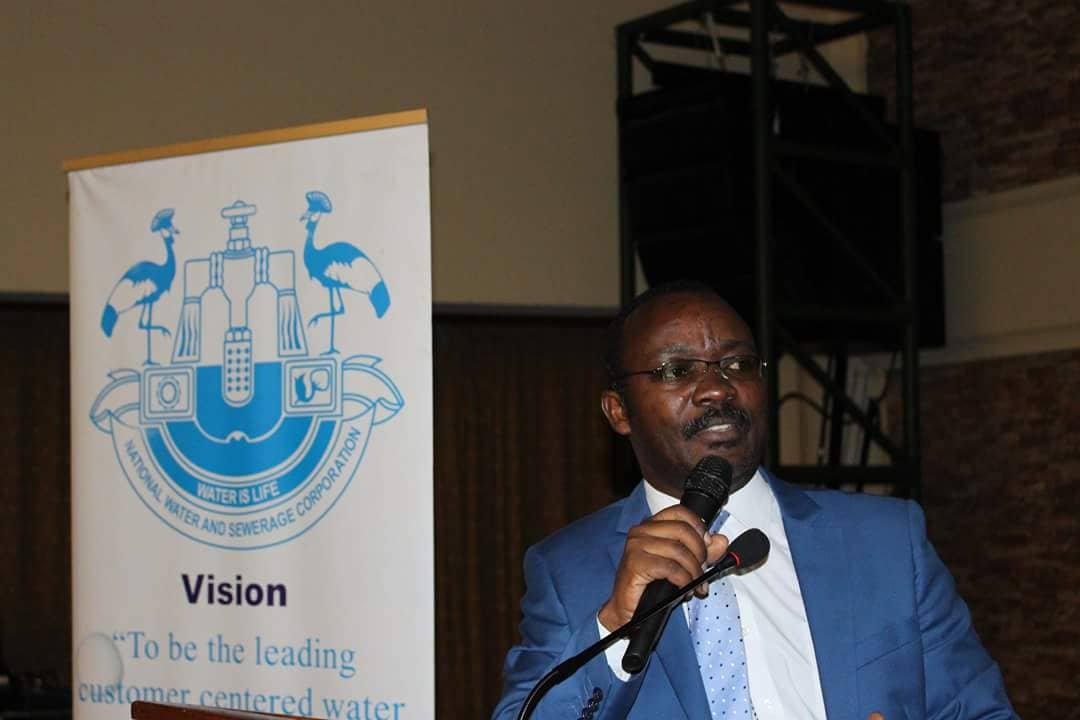
LUWEERO – Residents in water-stressed urban and semi-urban areas of Luweero, Nakasongola and Nakaseke districts have reason to smile after National Water and Sewerage Corporation (NWSC) extended piped water to the area.
The new piped water system worth UGX1.3bn is expected to boost the percentage of safe water coverage for Luweero District to about 65 percent with the percentage of the population able to access piped water rising from 27.5 percent in 2017 to 31 percent in 2019 according to the statistics available at the district planning unit in Luweero.
The development will also help several parts of Nakaseke District which have for a long time suffered water shortage including the towns of Kapeeka, Ssemuto, Nakaseke, and Butalangu get piped water.
“We would have loved to have the entire Greater Luweero area to have piped water, but NWSC insists that their mandate is currently limited to the urban and some semi-urban areas to supply the piped water.
For Luweero District, we are delighted to have about 70 percent of the 102km piped water supply system which now benefits more 40,000 families.
“This is a great step in boosting the safe water coverage,” Mr. Ronald Ndawula, the Luweero District chairperson said during the commissioning of the project over the weekend.
The new water reservoir tanks established at Nsozibiri hill in Luweero Sub-County, Luweero District have a water supply capacity of 370 cubic meters per hour and are expected to boost the already existing piped water system to effectively supply the urban areas of Luweero, Wobulenzi, Kikoma, Butuntumula, Katikamu, Lutuula in Luweero District while the piped water system on River Mayanja in Nakaseke District is now able to supply more than 25,000 families in Kapeeka, Semuto, Nakaseke and Singo UPDF training facility.
“When you add to the other urban areas including Busiika, Zirobwe, Bombo, Kikyusa and Nakasongola, the piped water supply system makes a significant effect in boosting the safe water coverage. Our water is treated and at the different water reservoir tanks before distribution,” Mr. Ronald Kisakye, the NWSC manager in charge of Luweero Area, said in an interview.
Mr. Moses Ssenfuma, the Kapeeka Sub-County Chairperson is optimistic that the piped water supply system will boost the different development projects lined up as the area agitates for a municipality status. The population of Kapeeka Sub-County including the town is fast growing with the industrial park, residential areas, business premises and institutions in need of a stable water supply system. The piped water supply system is a timely intervention for the people of Kapeeka,” Mr. Ssenfuma said.
While NWSC strives to ensure that water is accessible to a bigger percentage of Ugandans at a more affordable cost, the current mandate of NWSC targets the urban population where a total of 258 towns are now covered.
“We still have a challenge with the Nakasongola water system which is still under the control of the UPDF. Our staff has no direct control and access to the facilities which constrains our ability to deliver to the expectations of many people in Nakasongola town among other areas in Nakasongola District. The theft of the water meters is a big setback to our progress in some areas. We need to fight the vice and continue sensitizing our people about the water usage system because we have a section of the population that claims that the piped water is expensive. The tax on water is to help extend the services to other citizens in need of the water and not a direct payment for water, Dr. Silver Mugisha the Managing Director NWSC explained.

Ms. Phoebe Namulindwa, the Luweero RDC tasked the police and local leaders to work with the community in dealing with the meter theft problem which often paralyses the water delivery system. Sometimes the communities have clues that could help track the people behind the vandal acts for not only the water meters but other infrastructure. I also appeal to NWSC to consider the population near the urban areas by extending some standpipes to lessen the water burden.
In Luweero Town, NWSC registered the theft of about 50 water meters during the month of March. Through the help of the community and the police, several people were tracked and arrested with some of the meters, Mr. Paul Mukungu the LCIII Chairperson for Luweero Town Council explained on Saturday.
Part of Greater Luweero area is located in the cattle corridor which usually suffers water shortage whenever there long dry spells because available boreholes hardly produce water due to the low water table.
Part of the population in the area depend on point water sources which include protected water springs, boreholes, and shallow wells while the majority of the population within the cattle corridor sub-counties like Butuntumula and Kikyusa depend on water stored at different water dams which they share with livestock.
Last year, NWSC revealed they were looking for UGX15b to extend piped water to more 406 villages in the urban areas of Luweero, Wobulenzi, Semuto, Bombo, Kapeeka and Zirobwe which fall under the Luweero water cluster that covers a distance of 531km.
Currently, NWSC manages water in 258 large towns, small towns and rural growth centres across Uganda, while umbrella authorities are managing 223 small and rural growth centres in addition to those which need support, making a total of over 1,000 small towns.
By June 2016, NWSC had extended piped water in 175 towns, 15,500 villages covering 400 sub-counties in 62 districts. According to the NWSC plan, another 10,609 villages and 7.7 million people will be added to the piped water grid to allow them to have access to safe water by 2020





